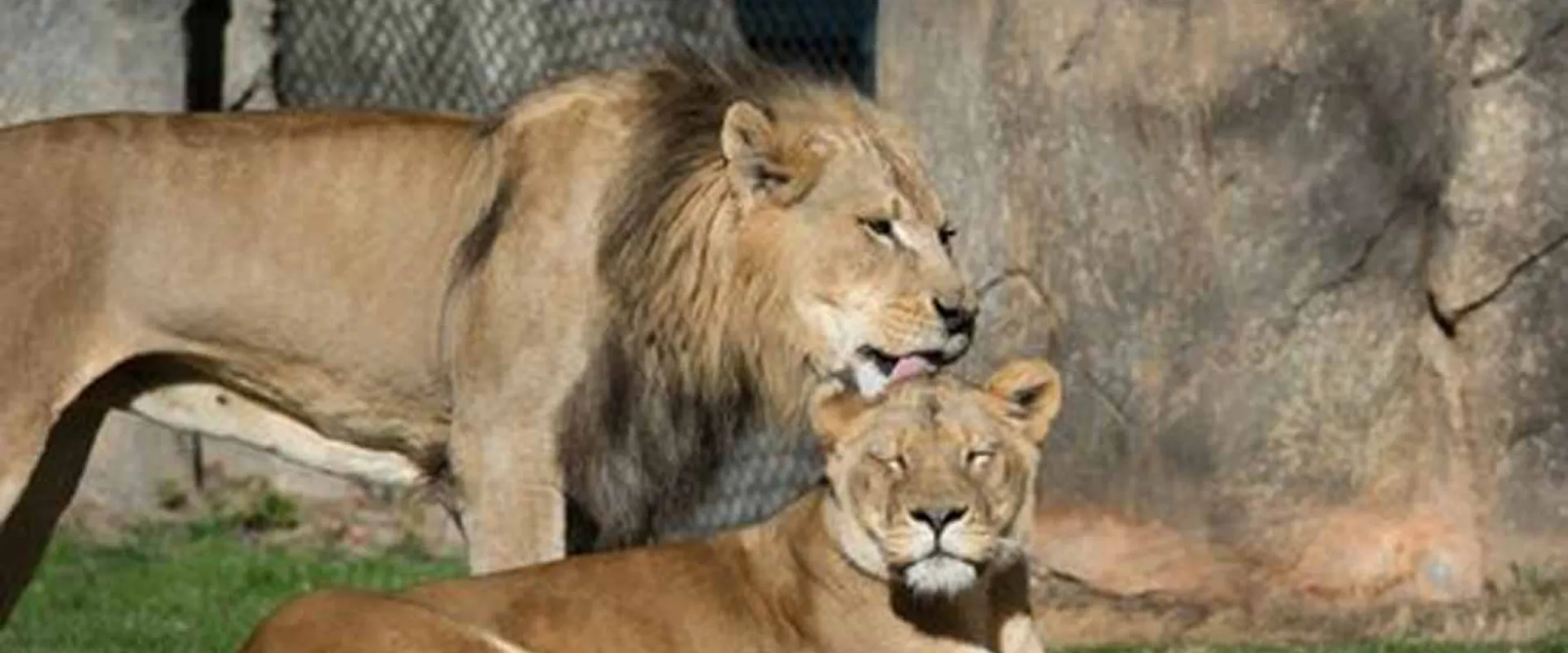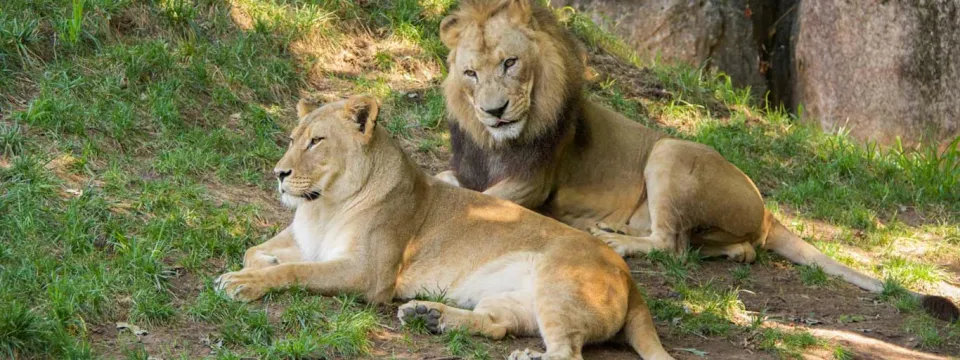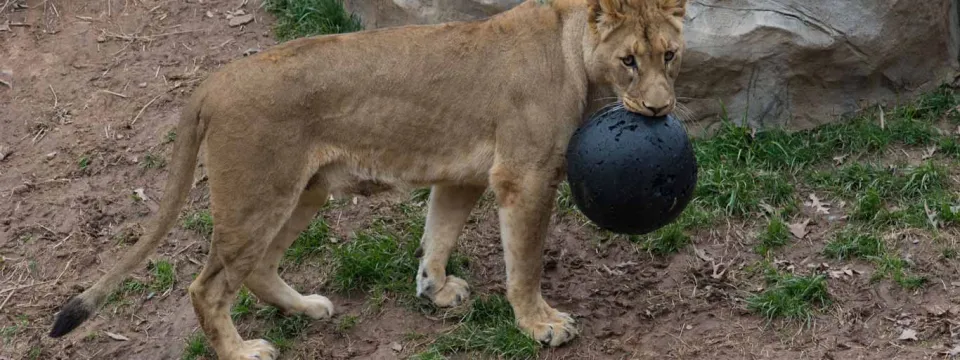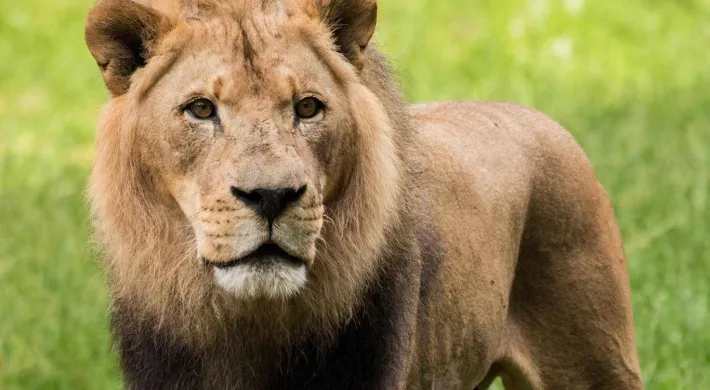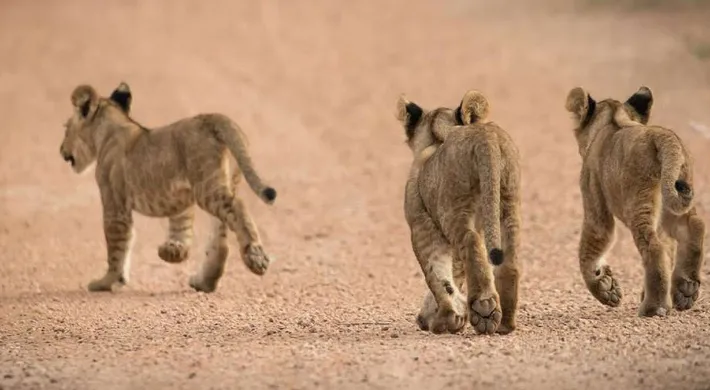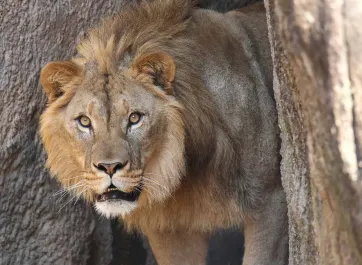Written by Lonnie Fox, Research Volunteer, North Carolina Zoo
My name is Lonnie, and I am one of the research volunteers here at the North Carolina Zoo. I graduated in May 2020 from Lenoir-Rhyne University with a bachelor's degree in biology. This is now my second year working with the Zoo. If you are a regular guest, you might have seen me working down by the chimpanzees in the Summer and Fall of 2019. That work was for my honors thesis, but when I was offered another opportunity to study the Zoo's animals, I could not say no! My goal is to go to graduate school and work towards an M.S. and Ph.D. in wildlife management and conservation.
I have now moved on from the chimpanzees to study the African lions housed here at the Zoo. Did you know African lions (Panthera leo) are the second largest big cats on earth (the largest being the Asian tiger)? They can weigh anywhere from 250 to 450 pounds and can be up to four feet at the shoulder. They are magnificent animals to see in person.
Like all the animals living at the Zoo, we are dedicated to our resident lions' well-being. To ensure this high level of welfare, the lions participate in an active form of animal management. This means that the management plan is flexible and ever-changing, creating a complex and stimulating environment for the lions, designed to encourage "species-typical behaviors" (or, rather, behaviors that you would expect to see in a wild population). One important part of that plan is something we call "enrichment."
Pictured Above: Figure 1: Mekita and Reily resting together in their habitat at the Zoo.
Enrichment has been the topic of these blog posts before, but I will summarize it here. In its broadest sense, enrichment increases the complexity of an animal's habitat, intending to improve welfare. More specifically, enrichment is any novel stimulus offered which is designed to increase desired behaviors (which are often species-typical). However, enrichment is not "one size fits all" and instead requires a plan adapted to an individual's behavioral needs.
Here at the Zoo, we house two African lions: female Mekita and male Reilly (Figure 1). They are offered numerous enrichment items that range from scented objects to frozen treats (Figure 2). These items were chosen to elicit desired behaviors, such as predatory behaviors and play. While a diversity of enrichment items is important, it is also critical that we know which items are most effective at encouraging those species-typical behaviors.
This is where I come in.
My project as a research volunteer has two main goals: 1) Establish a baseline of the current behaviors (in other words, collect data on how the lions spend their day); and 2) Determine the effects of varying enrichment. I achieve these goals by collecting observational data for 5 hours a day, three days a week. I stand outside the lion's habitat, closely watching them and recording their every movement in a software program specially designed for behavioral data collection. To ensure my data are not "biased," I observe the lions at different times during the day. In this way, I can see which behaviors were elicited in response to specific enrichment items. At the end of my study, I will determine which enrichment items were associated with the best behavioral responses. The lions' animal care team will then modify their management program by offering specific items that elicited favorable behaviors and design new items that encourage similar behaviors. In the end, this adaptive, data-driven management program ensures the continuous monitoring and enhancement of the lions' welfare.
Pictured Above: Figure 2: Mekita with one of her enrichment items (a big black ball) encouraging her to chase and play.
My project is still ongoing, but about 70 hours of data have been collected when this post was written. Continue to check a follow-up blog with the findings of this study and more information about our lions!
Lastly, back to our title question: "Does the Lion Sleep Tonight?" Actually, lions are a mix of nocturnal: most active at night, and crepuscular: active at dawn and dusk. So, they are more likely to be sleeping during a day visit to the Zoo.
